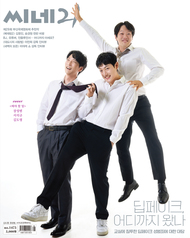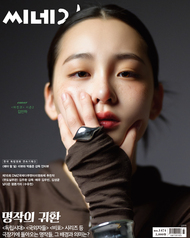So on Monday, PiFan was finally visited by plenty of rain. As in the wet stuff that falls from the sky, not the Korean singer (who is in Germany at the moment, working on the Warchowski brothers’ <Speed Racer>).
Actually, it was probably fortunate that we made it through the first four days of the festival with such great weather. Anything held in the middle of Korea’s rainy season (“jangmacheol”) is destined to get drizzle, if not downpours.
Some years, PiFan has received huge amounts of rain, even on the opening night and weekend, which can put quite a crimp in ticket sales, as well as the general atmosphere. Outdoor screenings especially have been held hostage to the whims of Mother Nature.
But as someone who likes the cold and does not handle hot weather well at all, I actually enjoy Korea’s summer rains. Anything the gets the temperature down a few degrees so I can walk around comfortably.
Sunday I met the Korean-American filmmaker Benson Lee, whose documentary <Planet B-Boy> is showing at PiFan. <Planet B-Boy> is all about Korea’s B-Boy dance culture, which has come out of nowhere to become a global phenomenon.
B-Boy dancing, the sequel to the 1980s breakdancing fad, has a fascinating history in Korea, and I am happy someone has finally documented it. From Itaewon clubs in the 1980s to Seo Taiji & the Boys and all the K-pop bands of the 1990s, hiphop-style dancing slowly grew, inspiring legions of young people the way. And the Universal Ballet is one of the top ballet troupes in the world, so dance of all kinds has long been popular here.
Unlike movies and much of the Hongdae underground music scene, B-Boy dancing in Korea mostly comes from the underclass, from poor kids who have real hope of attending any prestigious university. In many ways, it is the truest guerilla artform in Korea today, growing from the grassroots up, instead of coming top-down from the overeducated (much like the original hiphop music that inspired it). Truly a fascinating and unique part of Korean culture. Anyhow, Wednesday’s screening is all sold out (I am told), but there will be another screening Thursday morning that still has some seats left. Check it out.
월요일에 드디어 비가 피판을 방문했다. 가수 ‘비’가 아니라 하늘에서 떨어지는 촉촉한 것들 말이다.(참고로 가수 비는 현재 독일에서 워쇼스키 형제의 <스피드 레이서>를 촬영중이다.)
사실, 축제가 시작하고 나흘 간이라도 좋은 날씨를 맞이한 것은 정말 다행이다. 한국의 장마철에는 호우주의보가 없다면 당연히 가랑비가 내리기 마련이다.
몇해 동안 피판은 개막날이나 주말에도 많은 양의 비를 동반했었다. 비는 예매율의 상승세를 꺾고 영화제의 전체적인 분위기를 망칠 수 있다. 야외상영 또한 변덕스러운 날씨 때문에 꽤나 지장이 많았다.
하지만 추운 날씨를 좋아하고 더위를 잘 감당하지 못하는 나같은 사람은 한국에 내리는 여름비를 즐기는 편이다. 비가 오니 기온이 좀 떨어져서 편하게 돌아다닐 수 있다.
일요일에는 <플래닛 비보이>를 만든 한국계 미국인 감독 벤슨 리를 만났다. 그의 영화는 현재 피판에서 상영중이다. <플래닛 비보이>는 한순간에 국제적인 센세이션이 되어버린 한국 비보이의 춤 문화를 다룬다.
1980년대에 열풍을 일으켰던 브레이크댄싱의 바통을 이어받은 비보이 댄싱은, 한국에서는 아주 인상적인 역사를 가지고 있다. 나는 누군가가 드디어 비보이 댄싱에 대한 영화를 만든것이 매우 기쁘다. 힙합 스타일의 춤은 1980년대 이태원 클럽에서부터 서태지와 아이들, 그리고 1990년대의 K-pop밴드들을 거쳐 천천히 젊은 사람들에 영감을 줬다. 또한 유니버설발레단은 세계적으로도 뛰어난 발레단 중 하나다. 이는 한국에서 모든 종류의 춤들이 오랫동안 인기를 누려왔다는 증거다.
영화나 홍대 언더그라운드 음악과는 다르게, 한국의 비보이 댄싱은 주로 하위층이나 명문학교에 입학하는 것이 소원인 가난한 아이들로부터 만들어졌다. 많은 부분에서 있어서 비보이 댄싱은 오늘날 한국에서 가장 진정한 게릴라 예술 형식이다. 오리지널 힙합음악이 그랬던 것처럼 비보이 문화는 상하전달 교육 방식이 아니라, 아래에서 위로 전해진다. 그것은 한국 문화에서는 정말로 매력적이고 독특한 분야다.
아무튼, 수요일에 상영되는 <플래닛 비보이>는 모조리 매진이라고 들었다. 하지만 목요일 아침에 상영이 한번 더 잡혀있으며, 여전히 자리가 몇 석 남아있다. 얼른 확인하시라.



